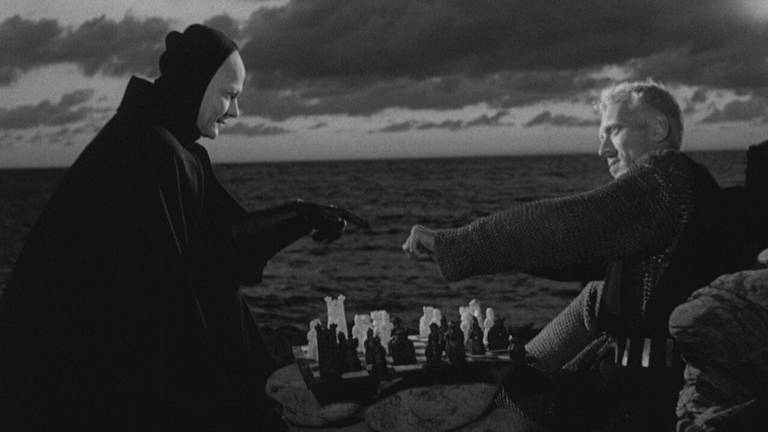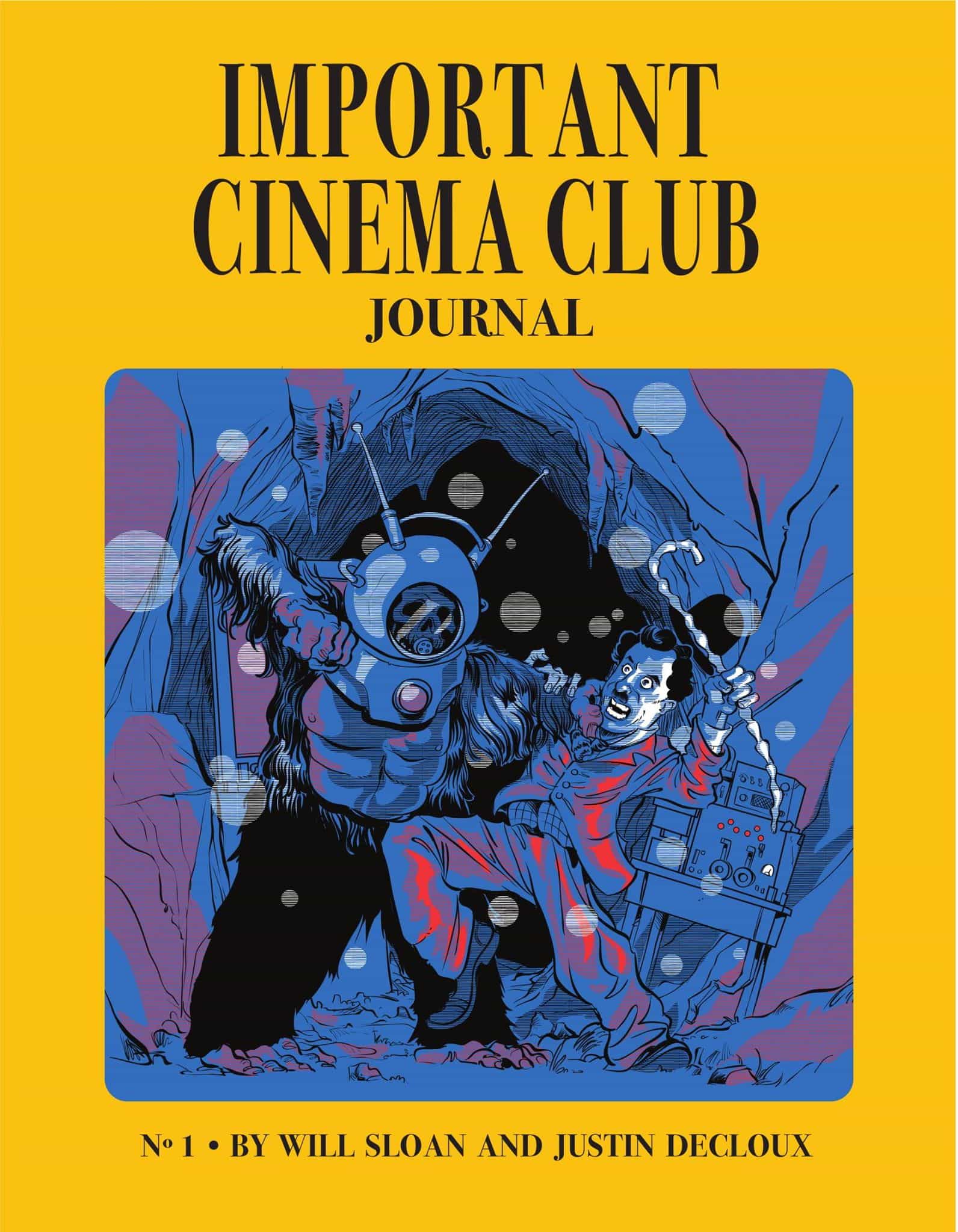
Centuries ago when I was still in College, I would spend the summers earning a little extra dough by working at an A&W fast food restaurant. One day, one of my co-workers (for the sake of this article we’ll call him Duke Bimblebottom Scrimbleswitch the Third – not to protect his identity, I just don’t remember his real name), told me he’d just seen the new Jet Li movie, Hero. I hadn’t seen it yet so I asked him how it was.
Duke Bimblebottom Scrimbleswitch The Third replied, “it was weird. There were all these words at the bottom of the screen you had to read during the movie.”
I paused a moment, chose my words carefully, and proceeded in the tone that I always take when when I’m unsure if the person I’m talking to is fucking with me, or if they are genuinely that stupid. For the record the tone I take straddles the line between a question, and a statement.
“Yeah, that’s because it’s a Hong Kong movie. The actors are speaking another language. Those words at the bottom are a translation called subtitles.”
Duke Bimblebottom Scrimbleswitch the Third visibly struggled with this thought for a bit.
“Ooooohhhh,” he said, “weird!”
He wasn’t fucking with me.
It’s true that the idea of simultaneously reading while watching a movie intimidates a lot of people. I know plenty of intelligent, literate adults that hate the idea of reading their movies and thus a whole world of film is closed off to them, but that’s not what this article is about, because subtitles are just the Jaws-fin skimming above the water that scares the North American film goer back to the safety and comfort of the beach they know and trust. I’m here to talk about the whole shark.
So here are several reasons, besides subtitles, that casual North American film goers are afraid of foreign films. How many reasons? I don’t know, however many I wrote. Count them yourself. This isn’t some click-bait, Cracked.com article. I have journalistic integrity ovah heah!
The Kung Fu Konundrum:
(This paragraph sponsored by, Mountain Dew, “do the dew! But whatever you do, don’t do the new Hawaiian Explosion flavour Dew, as the chemical colouration we used to make it glow in the dark, ironically causes pancreas implosions.)
Kung Fu is cheesy right? We all know that the only way people can fly through the air, or perform miraculous feats of strength is if they’re an alien refugee from a highly explosive planet, or if they’re dosed with some good, ol’ fashioned, all American, nuclear radiation. For some reason, we can only accept our superheroes if we’re given some vaguely scientific reason for their powers. No matter how ludicrous the excuse may be.
Daredevil? As a young Catholic boy he got some toxic goo shot in his eyes. Usually when this happens, the local priest is just moved to a new town, but in Daredevil’s case he got superpowers. Hell! Even Thor’s “magical” world of Asguard isn’t even magical, it’s just a planet with technology that’s so advanced it appears to be magic to us simpleton human beings.
On the other hand, heroes in Kung Fu movies gain their superpowers through intense training, and heightened spirituality. Kung Fu masters believe they carry their Gods within them, which they can unleash through meditation, burning incense, and other hippy-dippy, granola bullshit. North Americans think God is yucky, and naïve. They roll their eyes condescendingly at that kind of thinking, even if the U.S. And Canada are largely Christian-ish countries. Besides everybody knows that God isn’t inside you. He’s usually judging you from the comfort of a La-Z-boy made of clouds, when he isn’t appearing in burnt pieces of toast.
For some reason we find the idea of standing too close to a nuclear blast turning you into a mean, green, clobberin’-machine, more plausible than a dude training hard enough to push his body beyond its physical limitations. Even though deep down we know that all being in a nuclear blast will give you is a serious case of explodey death. Maybe it also ties into a culture of laziness that Hollywood movies like to indulge. In a Hollywood movie, if you wanna be the best at something, all it takes is a five minute training montage. In Kung Fu movies it’s not uncommon for training to take up one, to two thirds of the movie, and that’s often when the protagonist has already spent his entire life up to this point training. The protagonist is already a great martial artist, he’s just working his ass off to get better!
There are of course exceptions to this rule. The most obvious being the force in Star Wars, but keep in mind two things:
- George Lucas based the Jedi Knights on Samurai movies, incorporating an Eastern mysticism into an American franchise, and;
- The Force is presented in a sci-fi/fantasy world. The universe that the Jedi inhabited was already fantastical, allowing us to easier digest the idea of mystical powers existing within said universe.
But the thing is, they’re all myths, people!
It doesn’t matter if it’s presented in a sorta sciencey way, or through doing a whole bunch of push ups, it’s just a different method of delivering the larger-than-life human Gods we all crave.

How to Face Drastic Tonal Changes and Live to Tell About It:
(This paragraph is brought to you by American Apparel. “American Apparel, we swear we didn’t know our CEO was a sex offender, even though in hindsight the advertisement campaigns he created made that blatantly obvious.”)
If you’re the kind of person who believes that movies are just meant as escapist entertainment and not meant to elicit feeling, like… y’know a piece of art or something, than you probably don’t care enough about film to be on this website, reading this article. So for the sake of argument, let’s say that the average viewer is so used to movies that never provoke a single feeling, that they think it’s lucky if a movie makes them feel just one thing throughout its run time. For example, a super bleak drama that bums you out from the opening, straight through to the protagonist’s dying of anus cancer, after unsuccessfully attempting to sue Mountain Dew for causing said anus cancer. Roll end credits featuring rap song about anus cancer titled “cholo$tomy bizzag.”
The next step up from this is a movie that has one predominant tone throughout, but also has little contrasting flashes of an alternate tone thrown in. Think of a horror movie that’s scary throughout, but with a funny, quippy character thrown in to occasionally relieve the tension. When sexy teens go skinny dipping at Chainsaw Blood Death Creek (right on the outskirts of Night Terrorville, just off of Rural Route …um…Face Stab!) they always bring one wacky stoner, or nerd, or stoner-nerd along with them to break up all the “chh-chh-chh ca-ca-ca’s.”
This is still safe territory as far as the average viewer goes, but what happens when a movie has action in one scene, then comedy in another, then moving drama, then comedy again, then somebody dies horribly, but a scene later it’s funny again? Surely this movie doesn’t know what it wants to be. It’s confusing. You don’t know how to feel. The fact that you laughed while a main character died of Mountain Dew related anus cancer is bothering you. Shame on the filmmakers for making you feel the most emotionally confused you’ve been since American Apparel started releasing ads that made you kind of horny but also made you kind of worried they were murdering the models after the photo shoot was done.
The most frequent examples of films that drastically shift tones throughout their run time are in Bollywood, or Hong Kong films. Bollywood movies in particular regularly feature elements of Musicals, Romance, Comedy, Drama, Action, and Fantasy, or Sci-Fi, in their often over three hour long run times. Same goes for Hong Kong movies, except trim that run time to a lean hour and a half, and they have a lot fewer musicals.
I have a theory about this. India and China both have some pretty severe poverty. We have poor people here too, but it’s not uncommon for North American poor to be able to afford a computer or cable TV, or even an occasional movie ticket. If you’re poor in China or India, getting to see a movie is a pretty rare luxury. So if you’re going to pay to see a movie, you wanna make sure you get your money’s worth, and what could be more appealing to a hungry person than an all-you-can-eat buffet?
So how can this buffet-style film making work for viewers in these parts that are regularly given an overabundance of options? My advice would be to just remember that art doesn’t need to make you feel just one thing. In fact, I would argue that it’s even more impressive if a movie can make you feel two conflicting emotions at the same time. Years of Hollywood blockbusters and marketing schemes have brainwashed us into thinking that predictable equals good, and a drastic tonal shift is always a surprise.
Prudes Vs. Sex:
(This paragraph brought to you by, The Gap. “The Gap! We swear our sweatshops have fire escapes now, wink-wink”…man I gotta learn how to stop writing “wink-wink” at the end of these press releases.)
Oh those wacky Europeans and their frank, no-nonsense approach to sex. As an uptight, conservative from a country that’s civilization was built by religious prudes, their freewheeling sexual politics make me feel squeamish, and full of Catholic guilt…OR DOES IT?!
Actually, my own feelings towards sex are much more in line with European film’s frankness as opposed to the Hollywood romantic fantasy.
I’ll give you an example. I recently watched a French film called Fat Girl. In the middle of Fat Girl is a roughly twenty minute scene where a teenage girl is pressured into sex by her college age boyfriend. The scene isn’t sexy at all, and it’s incredibly realistic in it’s awkwardness. The girl’s sister who’s forced to share the room, is trying to pretend to be asleep. After fooling around for a bit, and it becomes apparent that the girl isn’t willing to give up her virginity, the older boyfriend talks her into anal sex, which is of course horribly painful for the girl, because neither of them have a clue as to how to properly have anal sex.
Long story short, it’s a bad first sexual experience for this young girl. Which is pretty standard for most young people’s first attempts at sex. Usually the circumstances are different, but the point is, director Catherine Breillat wanted to accurately portray a horrible example of a teenager losing her virginity, so that other girls could see it, and relate. Maybe even feel a little better about their own bad sexual experiences.
This point was lost on a lot of people in American festival screenings. If you look up Fat Girl on IMDb one of the first conversation threads is titled, “Child Pornography Masquerading as Art!” Putting aside the fact that Roxane Mesquida, the actress who played the teenage girl in question, was 21 when this film was shot, you may argue that, surely this comment is the result of one nutty, religious conservative, and an isolated opinion of the minority.
Like when that Church organization went to Cannes, to protest the movie Red State and one of the members accidentally wandered into a screening of Lucky McKee’s horror/patriarchal satire film The Woman, and instantly threw a tantrum to the delight of YouTube viewers everywhere. This sort of social commentary always goes over these peoples heads and is not a reflection of the mentality of our society as a whole. Except that Fat Girl was banned in Canada, until only recently. Not banned because it was made in a pre-60s liberalism era mind you. This movie was made in 2001.
This speaks loudly to the North American mentality when it comes to the portrayal of sex in movies. Surely the only function that a sex scene can serve in a film is to titillate, and even then it should be done through the safety filter of censorship. Preferably shot Top Gun style, where it’s just a couple of shadowy buttoxes (…buttoxi? …butts …just butts) writhing in front of candles, while curtains flow to the strains of “Take My Breath Away,” but still keep it rated R so I don’t have to explain to my children exactly what those two shadowy asses are doing to each other.
I’m barely going to touch on the old argument that violence gets a pass in Hollywood, while sex is a big no no. But ya gotta admit it is a tad odd that Keanu Reeves can passively shoot a bajillion Russians in the face and only get a PG-13 rating, while a film whose only crime is accurately depicting awkward teenage sex gets banned from the country. The ridiculous thing is while very few of us can relate to a retired hit man forced to come back for one last job, sex is a part of everybody’s lives. Whether you like it or not it’s an integral part of everybody’s human experience, no matter how much you plug your ears, close your eyes, and yell, “LA LA LA! I AM NOT HORNY! LA LA LA!”
You Got Your Artsy All Over My Fartsy:
(Brought to you by Corn Nuts, “Corn Nuts! Remember us, we still exist! You just can’t eat us anymore because your adult teeth are too jacked up now!)
Look we all hate pretentious, boring, wank fests. There have always been, “high art FILMS,” that seem to be made only for film professors and critics, but that’s not all there is to award winning foreign movies. Though, yes, once you decide to start checking out the movies of the “high brow” oeuvre, you will probably have to wade through several snooze fests. But I have good news for you. Every cinephile gets that enlightening, “woah! Art house movies don’t HAVE to be boring,” moment.
There is a YouTube video where Eli Roth praises Bergman’s The Seventh Seal for awarding him this moment. For me it happened in high school with a little Italian film called, Cemetary Man, or Dellamorte Dellamore if you wanna show off. Cemetary Man allowed me to see that movies could be abstract, and without easy answers, in a way that never frustrated me, but more importantly, never bored me.
Traditional narratives are great and all, but incredibly limiting. If you ever take a course, or read a book on screenwriting it will, no doubt, tell you that you have to stay within the classic, three act, story structure. To describe this method in a simplistic way, it works like this, Act One: protagonist gets stuck in tree, Act Two: throw rocks at protagonist, Act Three: protagonist gets out of tree.
You know what my favourite quote about screenwriting is? In the film Adaptation, Nicholas Cage, as Charlie Kaufman mocks a list of “screenwriting commandments” that his brother puts up by saying, “there are no rules.” I love that, because it makes the potential of the art form seem limitless.
I think of movies as falling into three categories. At their worst they are feature length advertisements. At their medium they can be escapist entertainment. At their best they are great art. Granted, most movies will fall into at least two of the three categories at the same time, and even at their worst they are still technically art, but when they are Great Art they have the potential to move you, even change you in some way. They can dominate your thoughts for days after you’ve seen them. Studies have shown that reading books regularly increases your potential for empathy. It wouldn’t surprise me in the least if films had the power to effect people in the same way.
Now isn’t the idea of broadening your horizons and maybe even becoming a better person worth the risk of being bored for a couple of hours every once in a while? Trust me, when you do find those truly exhilarating foreign, art house films, it is totally worth trudging through a few snoozers.

The truth is, despite the list of reasons I’ve just made above, there really is only one reason, besides subtitles, that people avoid foreign films, and that is fear of the unknown. It can be difficult to step out of the Hollywood manufactured comfort zone, and face the wild, weird world of international cinema that is waiting out there. These days it’s getting easier than ever to not be surprised by movies. You know exactly what you’re getting when you go to the Cineplex theatre chain, and sit down to watch the latest big studio, factory assembled, test audience approved, cinematic comfort food. Hell, most of all these movies are sequels, remakes, or reboots of franchises that you’re already familiar with, and if you’re still worried you can read a detailed plot synopsis, and several reviews online before you even consider buying a ticket.
Movie going has become a lot like eating at McDonalds. No matter which McDonalds you go to, you know exactly the experience you’re going to have. But the problem is McDonalds is highly processed, nutritionally empty, and instantly forgettable. Art shouldn’t be any of those things.
(This last paragraph brought to you by McDonalds. “McDonalds! Soon we will rule, and all will bow before us as our slaves! Mu hu HA HA HA!…I mean I’m lovin’ it!”)
I can argue these points all day, but I can’t change your mind for you. The ultimate question that you can only answer for yourself is, do you want to take the low risk, high reward route of stepping out of your self imposed film going boundaries, or do you want to go on eating McDonalds for the rest of your life?





